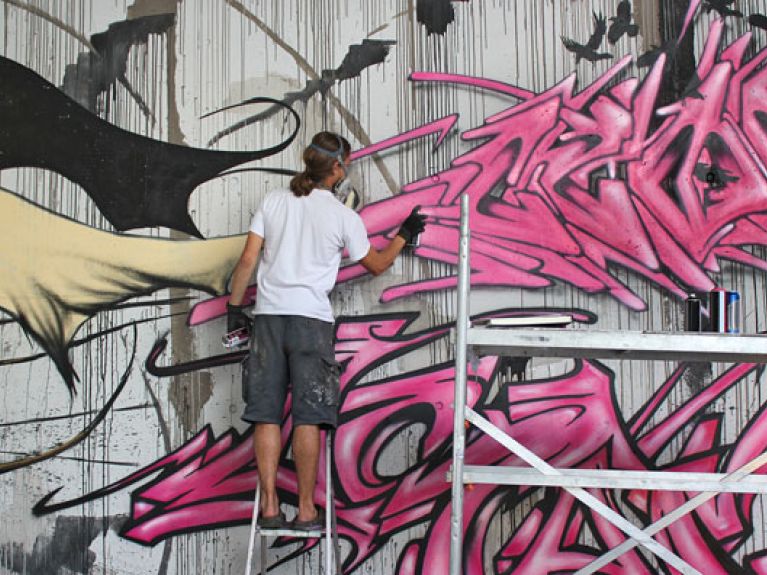Graffiti become cult
In Berlin a Museum for Graffiti is being built, researchers are setting up a graffiti database and companies are beating a path to the doors of graffiti artists.

Harald Nägeli, the “sprayer of Zürich“, went to prison in the 1980s for his stick-figures sprayed on public walls. Now his works are recognized by the city of Zürich as “worthy of protection”. Veneration of the new art now goes so far that individual works are protected with plexiglas panes or sawed out of the walls so that they can be sold at art auctions. This has happened with works by the British street artist Banksy.
A Museum for Urban Contemporary Art
In Germany too the scene is gaining increasing recognition. In the summer of 2017 Germany’s first street art museum will open its doors – the Museum for Urban Contemporary Art. For this purpose, a Wilhelminian villa in Berlin-Schöneberg is currently being renovated. A real challenge, because “the actual exhibition venue is the city itself”, says Thomas Willemeit of the commissioned architects office Graft. But the avant-garde architects of Graft, sometimes referred to by the press as “pop stars of architecture”, have managed to handle very different kinds of work.
A database for graffiti
Researchers at the renowned Karlsruhe Institute for Technology (KIT) and the University of Paderborn have also launched a graffiti digitalization project, which will collect hundreds of thousands of works nation-wide in a database. The Informationssystem Graffiti in Deutschland (Information System on Graffiti in Germany), or InGriD for short, will be funded by the German Research Foundation in the next three years with around 850,000 euros. The aim is to examine developments and changes over longer periods of time and to study systematically their visual aesthetics, specific imagery and typography, grammaticality, urban location and social function and significance.
Sought-after artists
The creatives themselves also benefit from this trend. Shunted into the corner for years, they are now witnessing the spectacle of big corporations beating a path to their doors. Marcus Dörr, managing director of the Offenbach graffiti agency artmos4, already founded in 1997, reports of orders from automobile manufacturers, energy suppliers and real estate companies all across Europe. Graffiti artists have even sprayed for the Goethe-Institut in Moscow, Hong Kong and China.

